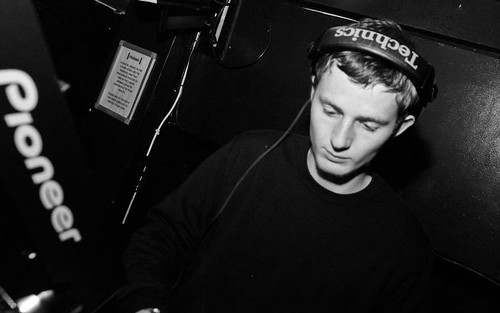Live at SuperDeluxe // Beyond Code

Photo by Rakutaro
It seems as if coding is a bit of a hot topic at the moment. Many of the artists working under the banner of post- or even post-post-Internet have been using code to program algorithms and manipulate data sets, and the function of computer code has itself become aestheticised in many ways. This obsession is in fact nothing new or even niche as an idea. Earlier this month at Cafe OTO, I saw AGF perform a poem rapping out long strings of code. Ryoji Ikeda has also been touring his various projects related to data, visually and sonically based on his experiences as CERN. Jasmine Guffond too has played with this idea, with her 'Sound Selfies' that create music from facial recognition software. Furthermore, conceptual artist Lars TCF Holdus has been doing pioneering work in bringing code into art; spontaneously generating algorithmically produced art and sound, and incorporating other elements such as his own genetic code.
In Tokyo, coding in music has taken on an added improvisational dimension. At the hyped basement venue SuperDeluxe, an evening of live coding has been taking place called Beyond Code. This time around, we were treated to performances from sound art duo Reshaft and Stray Landings signee Yu Miyashita with live A/V from motion graphics collective, BRDG. During Reshaft, BRDG plastered graphically morphed faces and symbols over three walls, as Reshaft pumped hyperengineered sound effects in and out of the mix. There's something akin in this music to the sheen and HD quality of D'n'B subgenre, Neurofunk. Frequencies are played at the very periphery of human hearing, but only for a split second before there's time to fully examine them. The final performance consisted of a live coding performance by Akihiro Kubota, based on coding theories of both Iannis Xenakis & György Ligeti. This in turn was EQ'd and musically manipulated by Yu Miyashita. The sounds themselves were super-dry, like the sound of a spectrogram output, with every note on a keyboard held down at once. There were also what sounded like sirens and a never ending Shepard Tone, adding yet more layers to the confusing but joyous cacophony. Watching code being spelt out in front of your very eyes brought to mind the DIY ethos of early punk rock. Even if you hadn't a clue how exactly the coding worked, there was nonetheless a full disclosure about how it could be done, and with enough examination, anyone could do the same.
In David Novak's book, Japanoise: Music at the Edge of Circulation, he discusses the nature of feedback. Inputs are plugged and replugged into other inputs and outputs, creating a whirling orbit of chaotic sound and information. In Japanoise, this feedback was created using enormous tables of fuzzboxes, and placing microphones next to speakers to create apocalyptic screeches that sound like a mechanical hell. Novak argues that this became representative of "how a mechanical society feeds human energy back into the machine and measure[s] just how deeply creative subjectivity has become embedded in this cycle.” Now then, it appears as if the madness of the cycle is manifest through computerised feedback loops of data; constantly regurgitated through different methods of digitisation. With so many artists exploring the sonic and aesthetic possibilities of code, it feels as though we are watching the baby-steps for a much larger leap forward in the way we think about electronic music production. However, if we want to know how and where the truly groundbreaking work will occur, we ought to keep our eyes dead set on Tokyo and Beyond Code.
- Published
- Sep 11, 2015
- Credits
- Words by Georgie_McVicar
